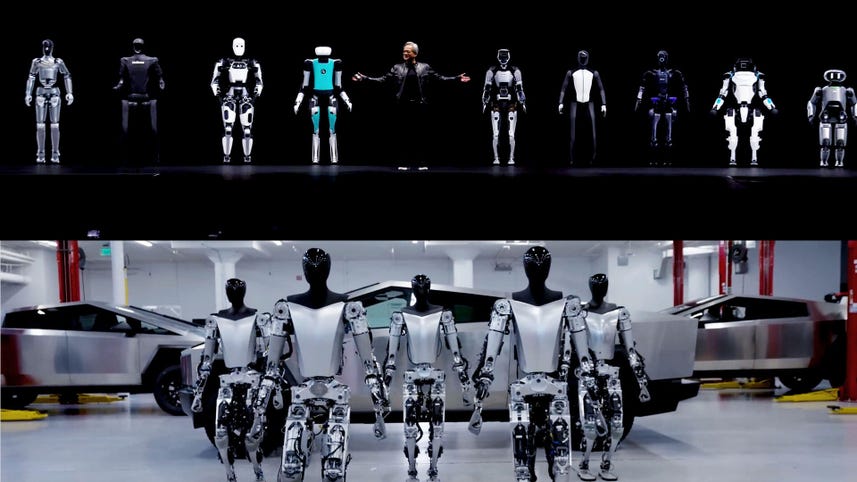
Speaker 1: NVIDIA’s, CEO Jensen Wong took to the stage in March with a fleet of humanoid robots, including some familiar faces from what the future’s past, but one big player in the humanoid robotics space noticeably absent was Tesla’s optimist robot. What does this announcement reveal about how Nvidia is positioning itself in the humanoid robot market, and in what ways is Tesla’s competing approach both similar and different to NVIDIA’s? Let’s get into it. Nine humanoid robots were brought [00:00:30] on stage to ring in the announcement of NVIDIA’s Project Group, which stands for Generalist Robot zero zero Technology. Yeah, that’s really what it stands for. Nvidia describes project group as the foundation for the development of humanoid robots, enabling them to understand human language and replicate human movements simply by observing them. This sounds strikingly similar to how Tesla’s optimist robot learns from video data inputs like human demonstrations. Nvidia [00:01:00] also demonstrated how the robots using its platform can train in simulation an important tool for robotics developers because it is generally much faster and more cost efficient to train in simulation than it is to train in the real world for hopefully obvious reasons.
Speaker 1: Tesla, on the other hand, has not emphasized simulations as part of its optimist, robot development, perhaps because it’s building off of its own. In-House ai, which is trained on vast amounts of real world data gathered, at least in part by the driver’s assistance in Tesla [00:01:30] cars. During NVIDIA’s, big announcement, humanoid robots from several of the big players in the space were present, including digit from Agility, robotics, Atlas from Boston Dynamics, and more. This announcement seemed to be NVIDIA’s way of starting to position itself as a provider of key building blocks for companies developing humanoid robots. Nvidia also announced new hardware with its Jetson Thor computing system designed to provide the speed and power needed to work with the variety of humanoid robots [00:02:00] using project group. Tesla, on the other hand, seems to be aiming at keeping much of the production of its Tesla bot in-house, leveraging the lessons learned and tools developed for making its cars rather than partnering with companies like Nvidia to provide those services. This desire to forge its own path has paid off for Tesla in the past, for example, by building out its own supercharger network initially designed only for Tesla owners. Tesla is now starting to offer its EV charging infrastructure to drivers of [00:02:30] EVs from other companies for a price. Of course, perhaps Tesla has a similar goal in mind for the AI systems driving optimists.




















+ There are no comments
Add yours